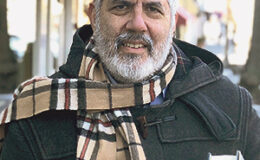

You never know what you’re going to run into when you check out the latest list of additions to the massive free data base at familysearch.com.
Close to home, FamilySearch is offering 469 digital images from cemeteries in the area of Jim Thorpe (Carbon County) from 1747 to 2007.
At the other size extreme is 4.4 million pieces of information about the slaves held in 14 states and Washington, D.C., drawn from the U.S. Census of 1860.
Unfortunately, the slaves are not identified as individuals. Instead, you get the names of the slave owners followed by information (such as age and family grouping) about the individual slaves.
Despite the lack of names, though, this was the last census before the Civil War and could be a useful link for researchers between the era of slavery and that of freedom.
In between are hundreds of thousands more records from all over the world.
FamilySearch is an ongoing project of the Church of Jesus Christ of Latter-Day Saints (Mormons).
Tip: The Luzerne County Genweb has been around so long that many of us probably take it for granted. Actually, it contains reams of material that’s potentially useful to genealogists in our area.
For instance, it contains the state’s listings of area mine accidents (fatal and non-fatal) from 1872 to 1918, most of the really busy (and dangerous) years in the anthracite coal mining industry. You’ll find not only the names of the miners, but information on their families as well — the number of widows and orphans created by the fatalities.
Since many of the fatalities turned into news stories, you can then go to the area’s newspaper repositories, such as the Luzerne County Historical Society, for additional information.
Secure Researching: October has been designated Cybersecurity Awareness Month by federal authorities, and genealogists should take heed. A lot of research into family history now takes place online. Genealogists should make sure their anti-virus and other protections are up to date and should steer away from any site or email that looks suspicious. Many institutions and individuals (some here in Luzerne County) have been victimized by ransomware and malware, with results including high cost, delays and lost data. For background, go to the Department of Homeland Security website at www.dhs.gov.
News Notes: Connecticut authorities are looking to DNA to solve a 1944 mystery — the identity of an unknown victim of a circus fire that killed 168 people, five of whom remain unidentified. On July 6 that year the main tent of the Ringling Bros., Barnum & Bailey circus caught fire during a performance. Another 682 were injured. The plan is to compare the DNA of one of two unknown women to known descendants of a woman who went to the circus that day and never returned, the Associated Press reported.
Watch for spelling changes in ancestral cities. Sometimes the English spelling of an overseas place name changes, and we have to be alert so that we don’t miss valuable information. One change happened recently with the Ukraine city we in the West knew for centuries as Kiev (two syllables), but is now known as Kyev (one syllable). The new English transliteration more closely approximates the way Ukrainians — with their Cyrillic alphabet — would pronounce and spell the city’s name. The same kind of change happened on a much larger scale decades ago when the English transliterations of place names in China changed to make them more authentic. Peking, for instance, changed to the more accurate Beijing.

Tom Mooney is a Times Leader genealogy columnist. Reach him at [email protected]














